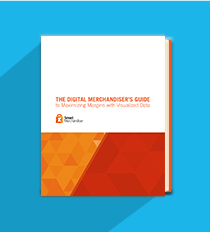
Effectively managing online inventory has become increasingly more difficult as merchandising managers are challenged with a growing eCommerce product catalog that often represents individual products with SKUs rather than visual cues.
That’s why, to assist with driving the highest revenue possible, many merchandisers are turning to eCommerce inventory management software that supplements IBM WebSphere.
Having insight into current inventory levels as it relates to each specific product and the color/size availability based on real-time sales is a major key to visually merchandising a webpage that effectively matches supply levels with current customer demand.
Here are five ways eMerchandisers are able to gain a complete picture over inventory with supplemental merchandising software:
- Visibility: Without real-time updates, it’s difficult for eMerchandisers to make optimized decisions regarding how to waterfall products down a webpage or which default color to showcase for a particular product.
Inventory management software keeps managers informed on the exact levels of inventory throughout the day so that they’re able to optimize product placement based on what’s trending, what’s in stock and what products may be stalling (and unnecessarily hogging valuable above-the-fold real estate). - Inventory Value: Inventory management software keeps eCommerce teams in the loop on exact inventory levels and inventory levels related to each product’s unique attributes such as color and size.
With this data, eMerchandisers can make informed decisions about how best to style an online catalog page to give equal balance to top trending items, while continuing to promoting items that need to be moved in a timely manner (seasonal clothing or accessories, for example). - Improved Response Time: Armed with real-time information, merchandisers can better communicate eCommerce needs to buyers, as well as keep management up-to-date on how well sales initiatives and promotions are performing. This allows for faster response time and the chance to course correct when less than optimal outcomes are logged.
Changes to buys, orders and future inventory can be made on the fly to reduce waste, which naturally increases profit margins. In addition, forecasting becomes much simpler. - Increased Sales: By making the necessary adjustments and responding to data-related to demand, trends and inventory levels, merchandisers see the benefits of:
- Stock Reduction: Sales increase through more effective merchandising decisions, therefore the amount of items in stock are also more efficiently reduced. This leads to a faster turnover cycle between orders and sales.
- Warehouse Consolidation: A natural effect of reducing the amount of items in stock, warehouses are able to free up shelf space. This gives eMerchandisers flexibility going forward. They can upgrade sales goals appropriately or even increase the variety of items they keep in stock.
- Reducing Taxes and Insurance Premiums: Excess product in stock means increased insurance and tax liabilities.
- Analysis: Careful calculation related to granular inventory data related to sizing, coloring and trending provides eCommerce teams with the information they need to optimize inventory levels and on-page layouts.
The goal of inventory management software is to empower eCommerce directors and merchandising managers with a full-view of their inventory in real time to provide them with the tools necessary to streamline workflow. This information currently is obtained manually, but it often comes hours or days late, rendering real-time optimization impossible.
Improving profit margins is at the top of all eCommerce merchandiser’s to-do lists which is why we’ve created The Digital Merchandiser’s Guide to Maximizing Margins with Visualized Data eBook.
Download the eBook to learn more!


